Let’s tackle a very serious subject in a round-about manner. I hope that you get my gist of what I am trying to explain, and with that, you can extrapolate into the realms of advanced military strategies, economic strategies, and all the rest.
Let’s begin with various light subjects…
Here are 10 adjustments to Japanese life you may find difficult…
1) TIPPING
Don’t do it (they’ll stare at you blankly or give you the money back) – I actually prefer this one. For tippers, it might be hard adjusting to the fact that what it says on the menu is how much you pay at the end… crazy concept I know.
For those that are adamant about the fact that “Tipping promotes good service”, come to Japan. Great service, with a smile…without tipping! You then realize that the whole tipping thing is nothing but corporate BS made up to help retail owners pay their staff peanuts.
GAIJIN TIP: Just don't do it... even when you think it's good service.
2) TAXI DOORS
Don’t try to open or close the taxi door (it’s automatic). I’ve slammed a few taxi doors in my time (a remnant of Black cabs in London). I think the driver thought I was ready to start a fight.
Worth noting that Japanese taxi drivers are clean, efficient and cheap!
GAIJIN TIP: Wait for the door to open for you, otherwise the driver might think he's being hijacked.
3) SHOES INDOORS – DON’T DO IT
Take your shoes off before you enter a house. This is inexcusable, even in your own home.
GAJIN TIP: Learn the art of the Genkan (the small space between the outdoors and inside where guests take off shoes). Don't just take your shoes off, place them neatly facing the door.
4) DRINKING
Be prepared to see lots of drunk people late at night, particularly at Christmas/end of year where the level of drunkenness goes off the scale. If you have Japanese friends, you will get very drunk, and you may have to adjust to this being a regular part of life in Japan.
That said, Japan is the best place in the world to get drunk. You won’t get beaten up, you won’t get your wallet nicked and you will be surrounded by lots of drunk Japanese who want to practise their English with you.
GAIJIN TIP: Lose your "Western" shame about drinking and being drunk. It's not unusual to hear Japanese women tell you they are hungover because they got razzled last night. Learn to love Japan's extensive offering of soft drinks aimed at the hungover masses (Pocari Sweat, Aquarius, Hepalize etc)
5) Re point 4… DRUNK SALARIMEN
Watch out for red-faced drunken Salaryman guy playing air golf with his umbrella on the train platform. Also, drunken Salaryman rolling around the train carriage floor, often asleep, sometimes murmuring something incoherent, at other times in a pool of vomit… You may have to adjust to being comfortable with just watching his corpse roll around the carriage floor with people stepping over him.
GAIJIN TIP: Beware of young looking, drunk salarimen in suits. They will inevitably be the ones forced to drink the most by their superiors and almost always at the brink of extreme vomit.
Also, learn to appreciate the finer pleasures of the drunken salariman singing Enka songs during Ohanami (cherry blossom) season.

6) CHIVALRY (OR LACK OF)
Don’t expect people to open the door for you in a shopping mall, or “ladies first” or someone to offer up a seat to an old woman, or a pregnant woman on the train.
There are “silver seats” in the carriages for the above but everyone conveniently falls asleep when a little old lady or pregnant woman shows up standing next to them.
Also watch out for “Kusobaba” – the strong old lady who pushes her way through the train like the carriage caught fire or something. Don’t mess with her, she has a Fendi sale to get to…
GAIJIN TIP: If you are foreign, especially male, you can earn serious brownie points by offering to carry a lady's luggage up the station steps. You may also get arrested for scaring the locals.
7) CRAZY CYCLISTS
If you’re driving, watch out for cyclists, they are insane. Cyclists, particularly women on “mamachari” do not stop for anyone, pedestrian or vehicle. They have only one speed and are quite often either carrying children on the back or reading their mobile phone while cycling (if young girl). You may have to adjust to developing a 6th sense for predicting which random street a cyclist is going to charge out of at any moment.
There are a number of discrete signs on the roads that say:”自転車左側通行” – Bicycles on the left hand side of the road.
However, outside of the main roads, a large number of cyclists ignore this and cycle both sides against the traffic, especially ママチャリ mothers. For both oncoming cyclists and drivers this is pretty dangerous and it seems the offending cyclists are unaware they’re doing anything wrong. So, this takes some adjustment.
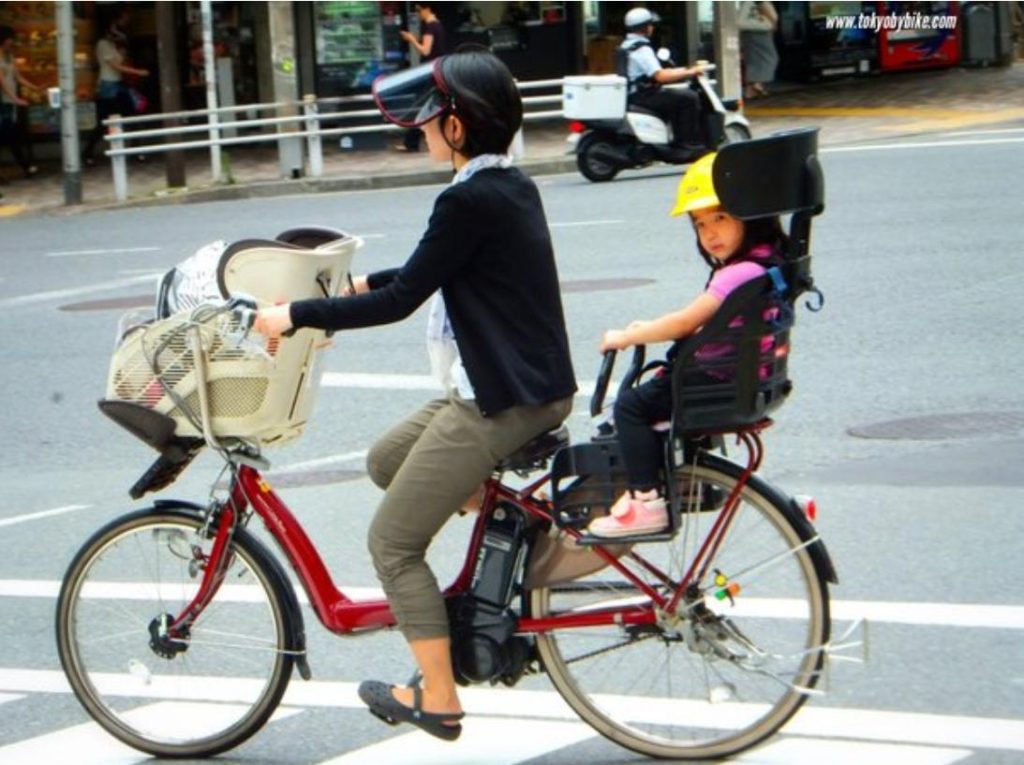
PIC: This is a motorized ママチャリ (mamachari). As I said in my point above, they are a real challenge for drivers. They tend to charge down the back roads on different sides without stopping for anyone… How they keep balanced with kids on the back and their shopping on front is nothing short of witchcraft.
GAIJIN TIP: If you cycle in Japan, learn the hand signals no-one else uses, learn to track-stand, emergency stop, cycle with no hands while holding off a drunk Ojiisan veering into your path... all useful skills
8) NOISE
Boy is it noisy.
I read somewhere that Japan was the noisiest country in the world. Machines play tunes all the time, cars drive around blaring their speakers asking you to recycle old washing machines, then there’s the local speaker system to announce town news etc etc. You may have to adjust to this new normal and buy some ear plugs.
I have lived in the 2 “noisiest countries” in the world (according to some)… Spain and Japan The second noisiest country in the world – hear-it.org
& Noisiest nation in the world?
, I’ve worked in different states in India, as well as South East Asian countries… so I appreciate what the comparison is. Anyway, maybe it’s not as loud as your home town but for most people it’s noisy.
On the trains Japan can be deadly quiet but my point was about machines and loudspeakers everywhere: beaches, elections, American air bases, public address speakers, alarms etc etc. It’s funny how in supermarkets you can have 3 or 4 different songs playing at the same time – no one seems to notice!
9) CUTE GIRLS
I often see Western couples walking through Tokyo and I know what’s going through the guy’s head as he’s looking round at all these pretty girls. No fat arms, no fat asses, they dress so well. Apart from the teeth, and the occasional pigeon feet, it’s all good…
And for those guys who come here with a girlfriend back home… good luck, it ain’t gonna last.
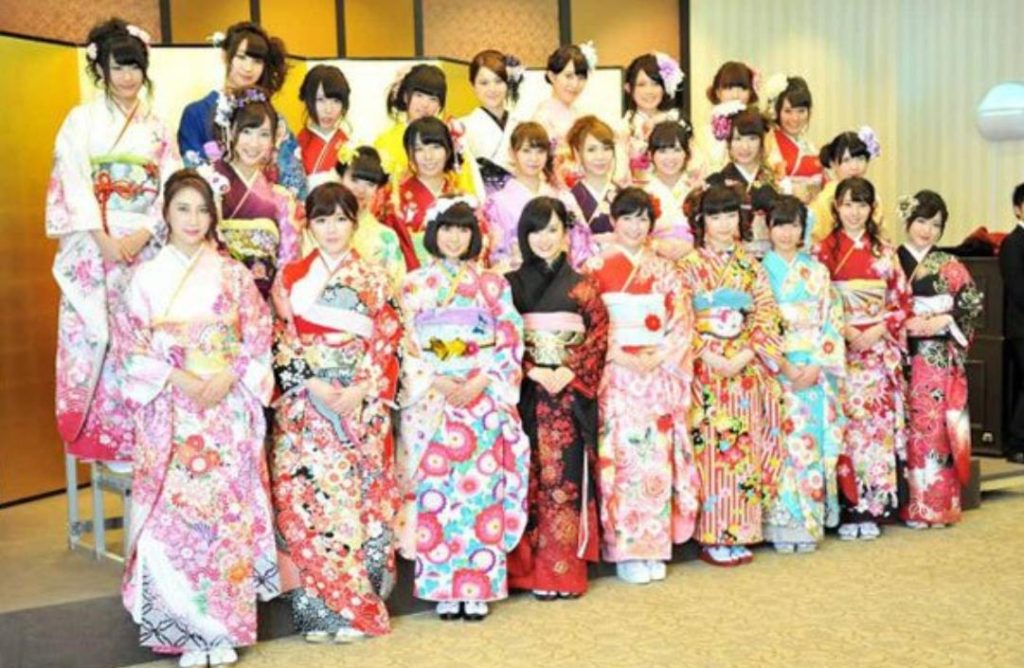
10) NOT BEING THE CENTER OF THE WORLD
In all honesty, I adapted pretty well to the above 9 adjustments in my time here but it was #10 that really blew my mind. Wow, this is how Japanese kids see the world. For the first time I had to adjust to the idea that my country wasn’t the center of the world, but somewhere out on the edges… that was a hard adjustment but a liberating experience.

11) BONUS: EATING IN PUBLIC
Wow! Thank you for all your interest and great comments on this post…I’ve decided to add an 11th “adjustment”… eating in public in Japan.
Visitors might be surprised by the looks they get when trying to eat a kebab or Big Mac and fries on the train so it’s good to know the Japanese rarely do it. Not never. There are some exceptions when Japanese do eat in public places:
- On a train you can eat in public if you do it slowly and secretly. Keep the food in its bag. Do not make eye contact with other passengers while eating. Try not to alert passengers with the sound of your food wrapper. With your head down, eat with very small bites while reading a book or phone. Preferably stand in the corner by the doors.
- You may eat in the small ad hoc standing area known as the “shame spot” frequented by smokers. This can be found to the side of the convenience store. Alternatively you can eat without shame in your car if parked a. convenience store.
- You may also eat in public if it’s an ice cream.
So, an interesting observation to add…
On my way home last night on the train heading out of Shinagawa. I’m staring at my phone and notice some food smell. I look up. I see other people looking around with frowns. A middle aged lady a few seats down is eating a Nikuman (a rather stinky pork dumpling). It stinks out the carriage. She gets a lot of stares from passengers but she doesn’t give a sh*t and everyone’s too scared to complain.
She finishes her snack, puts on her mask and falls asleep.
So there is your answer to *what happens if I eat in public?*
GAIJIN TIP: Of course, you can eat in public if it's a festival or food is being served (duh!) People do eat in public in Japan, just not to the extent you'll see in other countries.
12) BONUS – SUSHI AS IT SHOULD BE
What on earth are sushi “chefs” doing in other countries burying their sushi under sauces, toppings and (the worst offenders being New Zealand) deep frying it?
Deep Fried Sushi???
Anyway, sushi here in Japan is much simpler than the offending foreign varieties.
EXHIBIT A: JAPANESE SUSHI –
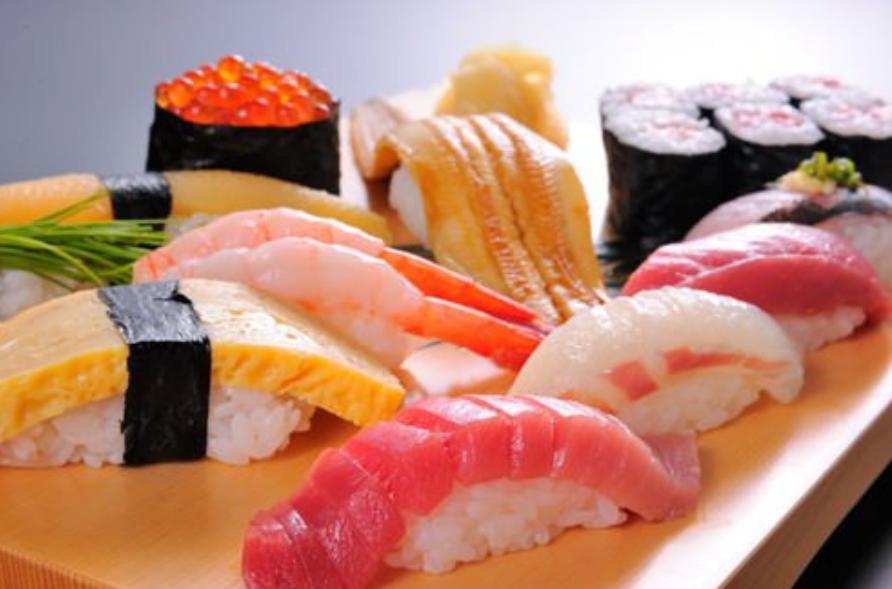
simple, subtle, delicious…
EXHIBIT B: SUSHI OUTSIDE JAPAN –
Looks like the cat vomited up this one…
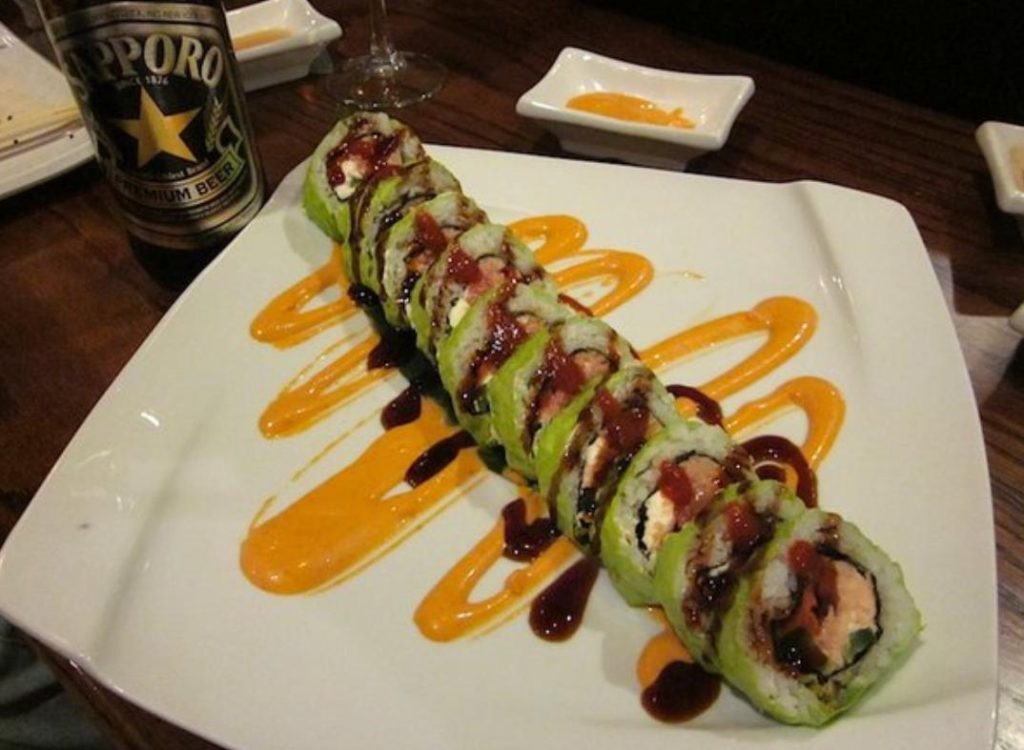
Your Japanese friends may look at this and say “マジかよ” (Majikayo) or in English…WTF?
So, please come to Japan and try the real stuff, you’ll never go back to eating Frankenstein sushi again…
GAIJIN TIP: Don't even try to convince the Japanese that... "sushi back home is real good..." it's a lie. They'll agree and listen to you with feigned interest because they feel sorry for you.
He’s named Shadow
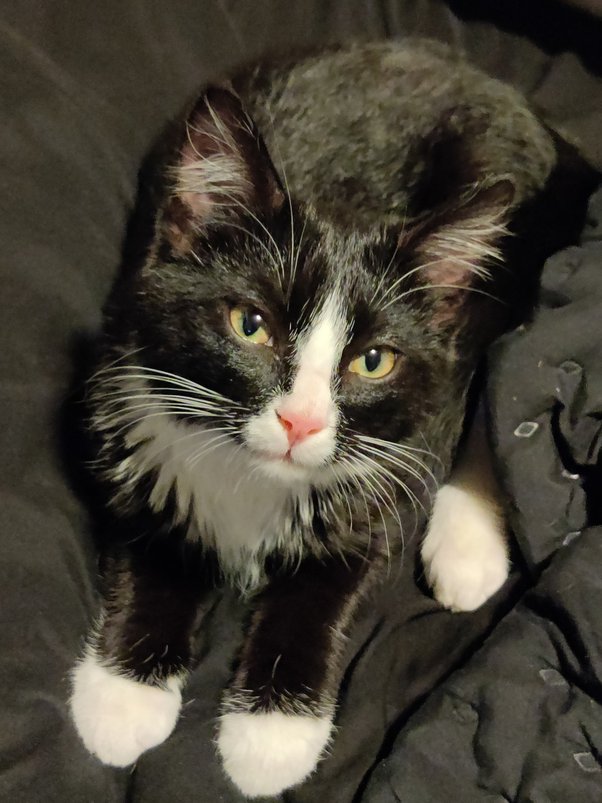
In sometime early January, I went to open my door to go check the mail and find this little guy trying to get in.
We brought him in and checked him out to make sure he was okay physically and, since it was cold, we were going to take him to a no-kill shelter so he wouldn’t be out in the cold.
4 months later:

He has become part of our family. He is so loving and playful, he claimed our (currently) 13 month old son as his favorite human because he tries his hardest to be next to him whenever he can.
When we found him he was no older than 4 months old but he’s had a great impact on us.
He’s named Shadow, not because of his color but because he literally follows you around like your shadow does. I love the little guy!
More stuff about Japan
Restaurants!
I made many adjustments when I moved to Japan, but among all of them, the things that I never got used during my 5 years were mainly restaurant related. The restaurant culture in the U.S. and Japan is just so different, and I was often left unsatisfied with the following points:
Lack of flexibility in restaurants.
In the U.S. there is a bountiful abundance of options and possibilities. I could have my french fries swapped for salad, I have rice instead of pasta, I can have Swiss instead of American cheese. If I ask nicely enough sometimes I could even have things not really on the menu. I love it! 😀
In Japan, there seems to be no other options other than what’s clearly written on the menu. Once I went to a cafe inside of a small airport and saw that they had hot English tea on the menu. I asked if it was possible to turn it into iced tea. The waitress tilted her head 45 degrees and said “Ahhhhh…… I’m sorry, but since it’s not on the menu that wouldn’t be possible”. In desperate need of iced tea, my addiction, I said, “Okay then, can you bring me hot tea and a separate cup filled with ice then?” To which she said “Ermmm……… I would have to talk to the manager about that…. But he’s not here right now”.
WHY?!?!? What possible negative consequences can there be giving me a cup filled with ice?? They already have ice, and they already have cups. This request virtually requires no extra efforts or costs. Is she worried the manager would scold her for giving away something that is already free? Or is she worried I would sue the cafe for burning myself while pouring hot tea into a cup and accidentally spilling it all over myself, consequently resulting in a loss of millions of dollars like McDonalds? No matter how I think of it, it just seems so absurd. Ever since that incident I’ve given up on straying even slightly from the menu.
Portion of food.
In America, everything is bigger.
In Japan, everything is smaller.
From my body’s perpective, this is obviously better. I know the portions in the U.S. can’t possibly be healthy and are often too big for one person to eat in one sitting. On the other hand, the Japanese have a saying “hara hachi-bun-me (腹八分目)” meaning “80% full stomach”. Not eating till you’re 100% full is considered the key to health, and I do agree I feel better when I eat to 80% and not to 120% like I more often than not end up doing in the states.
But from my heart’s perspective, the small portions in Japan just made me so sad! There are indeed many places with cheap prices and big portions, but at the same time a lot of the normal restaurants have normal to expensive prices and small portions, whereas in the states it’s more probable the majority of restaurants you go to will give you more than you should ever eat. I’ve lost track of how many times I’ve eagerly waited for my plate to arrive and become crestfallen at the portion that appears as if it was made for a baby hamster.
And for some reason takeout pizza is so expensive. In the U.S. I can get a large for 20 dollars and in Japan I would pay the same price for a personal pan pizza.
Lastly, I haven’t been able to prove this, but I even feel like the Big Mac is significantly smaller in Japan. Grrr.
Leftovers.
The majority of restaurants that I’ve been to across Japan prohibited taking home leftovers. So when I left food on a plate, I had to bid it goodbye forever.
This isn’t much of an issue on normal occasions since as I said, the portions are small. But when you are having enkai or dinner parties, this becomes a problem. These dinner parties are often held at izakaya and more than enough dishes to feed an army are lavishly ordered. Everyone would have put their chopsticks down and there would still be entire plates leftover. I was taught to never leave even a single grain of rice when I eat, so I couldn’t bear to watch perfectly good food (and especially those tasty karaages or fried chicken) go to waste.
Which is why I almost always sacrificed my own well-being and continued eating despite feeling and probably looking like pufferfish about to explode.
If the restaurants had allowed take out, I could have saved myself from multiple heartbreaks and about 20,000 calories. I understand the concern they expressed that they don’t want food poisoning to be caused by food that has already left the restaurant and can no longer be monitored, but for a country whose motto is “mottainai” (how wasteful), the restaurants don’t seem to be doing their part in reducing the food waste. (Hopefully it’s recycled and I just don’t know.)
I know the 3 points I mentioned above are not representative of all restaurants across Japan, and surely there is variation depending on the region and the grade of the restaurant. But, my main observation is that you will be much more likely to come across restaurants that don’t accomodate personal requests, have small food portions, and don’t allow take outs than you ever would in the U.S., which, for me, felt like the biggest differences between the restaurant culture in Japan and America.
I could also endlessly ramble on about all the things I like about the restaurant culture in Japan, but that’s for a different answer.
I will mention that:
On a positive note,
I love that you can take off your shoes at many restaurants.
I also looove cold oshibori (wet towels) on hot summer days and warm oshibori during chilly winter nights.
And I love love LOVE love horigotatsu (low tables with sunken floors for your feet to comfortably hang loose).
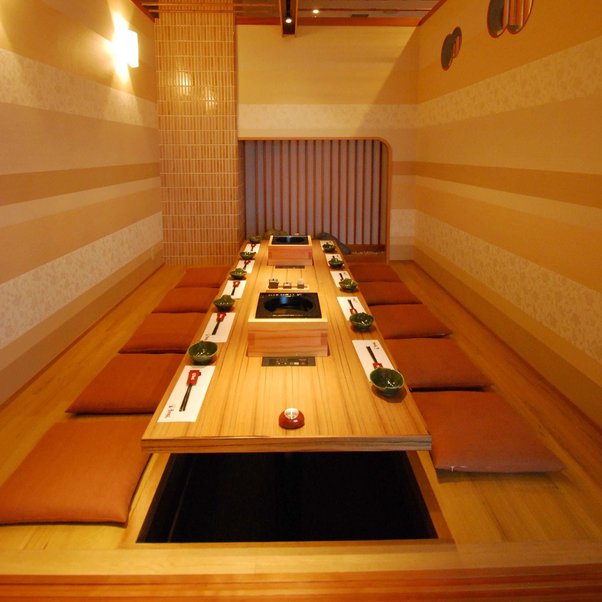
Taiwan Strait drill as weapons parade
The following is the second installment of a translated Guancha.cn article. Click here to read Part 1.
On a technical level, China’s Taiwan Strait exercise has showcased a variety of advanced weaponry and tactics and demonstrated the strength of China’s military industry.
Here’s a rundown:
Long-range rocket launchers
In the latest exercise, long-range rocket launchers were used. They were not the well-known 300mm rocket launchers but the more advanced 370mm ones.
Compared with the 300mm rocket launcher, the 370mm one has larger caliber, longer range and higher firing speed and accuracy. Also, they are modularized and can reload quickly and fire different types of rockets.
In the exercise, the new long-range rocket launcher showed its high mobility and great practical significance. When it was first displayed at the National Day parade in 2019, Chinese military watchers were surprised. They did not expect a newer generation of 370mm rocket launchers to be launched so soon after the 300mm ones.
It was said at the time that all equipment displayed in the National Day parade had already been in service. But no one knew whether it was still in the pilot stage or not.
The more advanced the equipment, the longer the time it takes to meet combat standards.
The well-known French “Caesar” 155mm self-propelled howitzer went into production in 2008. Its second generation was unveiled in 2022, still 6×6 chassis, with improved fire control and increased armor. It will take four years to develop before mass production. It will take even longer to be installed and form a combat force.
China’s long-range rocket launcher, which is more powerful and sophisticated, has successfully entered its combat mode within three years. It demonstrated the speed and efficiency of the Chinese military industry, as well as the PLA.
A lot of other advanced equipment was used, including Xi’an Y-20, 052D destroyers and J-20 fighter jets.

Dongfeng-15B
“Older equipment” such as the Dongfeng-15B, a veteran of the 1996 exercise, is still playing an important role.
According to US and Japanese media reports on August 5, 11 Dongfeng-15B missiles were launched during the exercise, with landing points encircling the northern and southern ends of Taiwan Island and the western Pacific Ocean. They were launched from Zhejiang, Fujian and Jiangxi with some of them passing over the suburbs of southern Taipei.
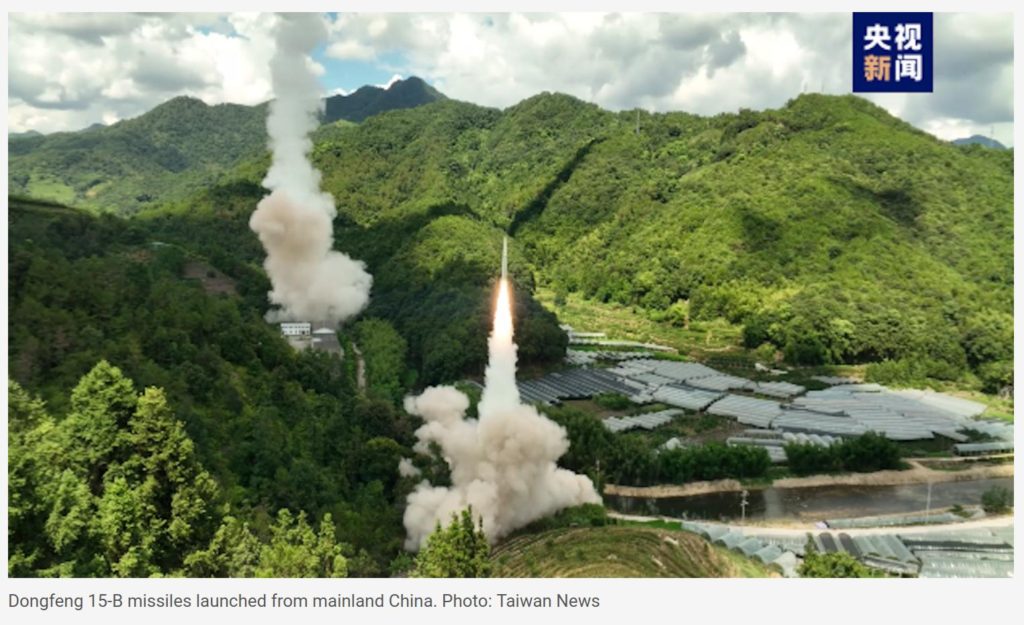
Interestingly, Taiwanese authorities did not issue any air defense alert and commented on it when it only when approached by the media afterwards.
Taiwan said no air defense alert was needed as the missiles were outside the atmosphere and posed no safety hazard when passing across the island.
Some Taiwan media and politicians said the arrangement was unfair to the Taiwanese people, who have the right to know.
There may be some untold truths regarding Taiwan’s failure to issue an alert. There are four scenarios:
- The Taiwan army failed to detect the missiles because of its insufficient detection capabilities or Dongfeng-15B’s stealth capabilities.
- It judged that the missiles would not hit the island so it turned off the radar to avoid its radar performance being seen by the PLA.
- It judged that the missiles would not threaten the island and that it could not intercept them.
- It judged that the missiles would not threaten the island and it did not want to
escalate the situation by intercepting them.
The Dongfeng-15B is an improved version of the Dongfeng-15 series. China has done deep research on stealth technology. It’s not surprising that the Dongfeng-15B has an anti-radar system.
In general, ballistic missile launch and early warning is a mature technology so the chance that Taiwan forces failed to detect the Dongfeng-15B is low.
It is a reasonable assumption that the Taiwanese army detected the missiles but let them fly over Taiwan as they did not pose any threat.
But this would be a really big gamble, because the PLA’s exercise was almost like actual combat. The seamless transition from an exercise to actual combat is a matter of minutes. If it happens, the Taiwanese army will be caught off guard. Of course, nonresponse would be reasonable if Taiwan wanted to hide its radar performance and reaction plans from the PLA.
The Patriot missile is the only means for Taiwan’s military to counteract but its range and height are limited. All its launch facilities are known by the PLA. The PLA’s missiles can easily evade Patriots.
In this case, Taiwan may simply pretend to have seen nothing.
It is also possible that Taiwan detected PLA’s missiles and had the ability to intercept them but decided to do nothing for fear of escalating conflict. But the chance is small.
If Taiwan did not intercept the PLA’s missiles flying across the island, what about high-speed drones and fighter jets? How can the Taiwanese authorities give the people any sense of security?
In any case, the Taiwan authorities have to give an explanation.
Chinese aircraft carriers
During the exercise, the Liaoning and Shandong carriers are said to have left their home ports and gone “somewhere.” Of course, they were not on a summer vacation at public expense.
The military role of China’s aircraft carriers is a matter of endless debate. There are constant claims that Chinese carriers are to be used to liberate Taiwan. But the fact that Chinese aircraft carriers went “somewhere” when the J-20 fighter jets, Xian H-6 bombers and Type 052D destroyers were deployed shows that narrowly defined operations in the Taiwan Strait are not suitable for Chinese aircraft carriers. It would be a huge waste to send them there.
Some people said Chinese carriers could only be used to restrain small-and-medium-sized trouble-making countries but not the US carriers. This is even more incorrect.
It is misplacement to turn a carrier into a mega maritime police ship. The country’s important weapon is to serve the country’s important task.
The US aircraft carriers are a great obstacle to China’s reunification by force. If the Chinese aircraft carriers cannot play the role of a mainstay in the reunification, how can they match Chinese people’s high expectations?
Besides, China will not do what other people expect.
Chinese aircraft carriers may not necessarily fight against US counterparts in contests like the Battle of the Coral Sea or Battle of Midway in 1942. As long as they can defeat their opponents with the support of 055 destroyers, submarines, shore-based aircraft and anti-ship ballistic missiles, it is a victory.
During the exercise, the USS Ronald Reagan moved closer to Japan and later showed signs of returning, but its actions remained hesitant.
It’s easy for the nuclear-powered carrier to move 1,000 kilometers in one day. The USS Ronald Reagan’s battle group had time to approach the Taiwan Strait throughout the exercise but it did not. There are certainly political considerations.
It is hard to conclude that the movements of the Liaoning battle group from Qingdao and the Shandong battle group from Sanya, Hainan had no impact on the US aircraft carrier, which had suddenly turned away from the Taiwan Strait and moved eastward on August 3.
The Global Times reported on August 4 that nuclear submarines had been deployed in the exercise. If there are still shortcomings in China’s military power, the shortcomings of both aircraft carriers and nuclear submarines are being gradually made up.
The report did not say whether a strategic missile nuclear submarine or an attack nuclear submarine was deployed, or both. In fact, strategic missile nuclear submarines are always on combat duty.
Nuclear submarines
Attack nuclear submarines have three functions: anti-carrier, anti-submarine and land attack.
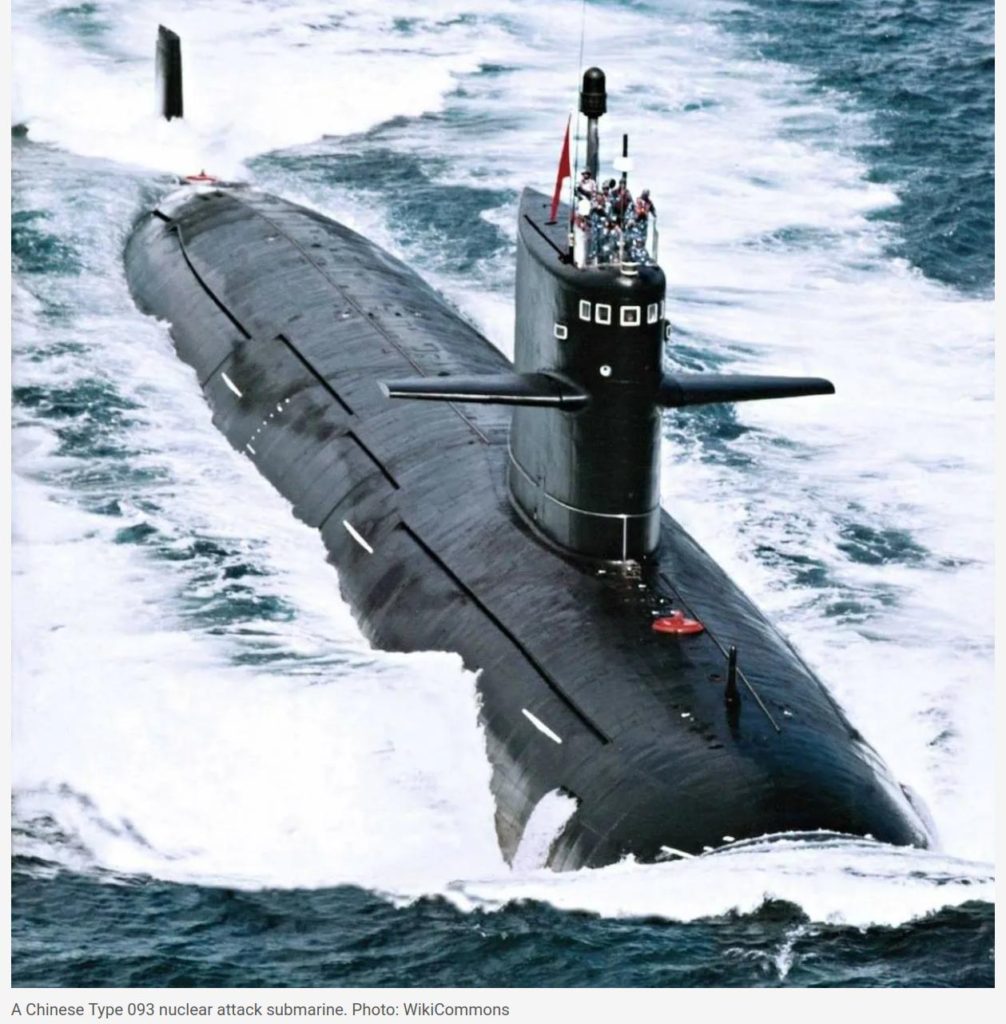
All these were used in the exercise. It is needless to say that anti-carrier warfare was the main task of China’s nuclear submarines while other missions included anti-warship and anti-merchant ships.
In the exercise, people paid great attention to the USS Ronald Reagan, as well as the USS Tripoli and the USS America. It is almost certain that US submarines were quietly moving in the Western Pacific Ocean.
During the 1996 exercise, Chinese nuclear submarines were also deployed, but the Americans scoffed that the noise was so loud that it could be heard across the Pacific.
This was certainly an exaggeration. At that time, China had just resolved an embarrassing problem: it had possessed no nuclear submarines in the past.
Over the years, China has grown its nuclear submarine technology quietly and rapidly. When China shows its achievement, people are very surprised. Now it’s the time for people to feel astonished.
China would not be unprepared to let slip that nuclear submarines were deployed. Probably, Chinese and American nuclear submarines are competing in the Western Pacific Ocean as well.
In terms of ground attack, there is no need to use nuclear submarines. But for the US bases in Japan, the situation is not the same.
Attack is always the best defense. And in the Western Pacific, that may consist of a a mass attack similar to that of the Chinese Communist Party against the Kuomintang in the Dabie Mountains in 1947.
In terms of electromagnetic and space warfare, various plans are also essential.
The PLA’s air force, supported by an airborne radar system, will be deployed while all kinds of air radars and data chains will be in full swing. It is necessary to keep our ears clear and eyes open but stay silent and confuse the enemy with false information.
In wartime, having an attack without disguise is dangerous as it will result in the enemy’s electromagnetic and spatial countermeasures.
At the same time, the PLA needs to show its real power to deter the enemy. It should let the enemy know that some more powerful attacks will come soon.
Taiwan’s planes and surface vessels
Taiwan’s military in general has stayed low-profile during the PLA’s exercise. Initially, it only deployed Mirage 2000 and Northrop F-5E/F.
The Mirage 2000 was once the mainstay of the Taiwan Air Force, but has been withdrawn from frontline use after Taiwan’s F-16 fighter jets were upgraded.
The F-5E/F is even older and is normally used only for training pilots.
Their deployment can save the more valuable F-16 flight hours and avoid exposing the F-16’s radar and data information.
In later stages, the F-16 (including the pre-upgrade A/B and post-upgrade V) fighter jets were sent but it did not necessarily mean an escalating action. It might be that the old Mirage 2000 and F-5E/F had to take a break.
The Taiwan Navy’s Cheng Kung-class and Knox-class frigates and Kidd-class destroyers are also old-fashioned.
In terms of combat power, they cannot match the PLA’s 054A, 052D and 055 destroyers. It is said that, during the exercise, the distance between the battleships of the two sides was only 1,000 meters, and even 500 meters. In the vast sea, it is a very close distance. But who has the high ground?
According to satellite images, the closest distance between the Nanking 155 destroyer and the coastline near Hualien was less than 10 kilometers. The Nanking 155 was very close to Taiwan’s ROCN Lan Yang and it forced the latter to move backward.
Taiwanese media boasted that ROCN Lan Yang had opened the cover of its Hsiung Feng anti-ship missile launcher to try to scare the PLA off. Not to mention that the PLA has much more powerful missiles, Taiwan’s anti-ship missiles could not be used at such a close distance.
Only Naval artillery was useful. But Taiwan’s old Mk-42 127mm gun also could not beat the PLA’s new H/PJ38 130mm naval gun.
The Nanking 155 did not go there to attack the ROCN Lan Yang. If it had, it could have used its H/PJ38, which has a range of 30 km. It only wanted to highlight the illegality of Taiwan’s 12 nautical mile line. The political significance of this mission, together with other drills, greatly exceeded the military significance.
In terms of range, China’s guided bombs with glide and long-range rockets can cover all targets on the island.
At close distance, the PLA can use a large amount of low-cost short-range ammunition. That is the core while highly precision-guided weapons are only supplementary.
Chen Feng is editor of Guancha.cn, which originally published this article in Chinese as an exclusive manuscript.
Imagine this scenario:
You were born in a working class family, and you worked all the way up to a successful entrepreneur.
You met a like-minded young woman and you fell in love with each other at the first sight.
You got married, and had three kids of your own.
You owned a prospering business of children’s apparel. With the profit, you were able to afford everything you ever wanted, including a $3 million luxury apartment with lake view in a large city with skyrocket housing price.
Admirable, yeah?

PLOT TWIST.
One day, while away on a business trip, you got a call, and you were told that the woman you loved, along with the three kids, were killed in a fire, leaving your luxury apartment in ruins.
Wait, there’s more — the fire wasn’t an accident. It was set deliberately by the nanny you hired.
You flew back, hoping it was a joke. Only that it wasn’t. Your three kids and your wife were lying in the morgue, never knowing your sorrow or pain.
This is the worst story I’ve ever heard, the worst thing that can happen to anyone, and the worst pain I wouldn’t even hope to inflict on my worst enemy.

This is the story of Shengbin Lin.
Before June 22 2017, Mr. Shengbin Lin was a proud father of three, owner of a clothing business and happily married to Ms. Xiaozhen Zhu, fellow entrepreneur who aspired to start a traditional Chinese clothing business. Together they lived in a high-rise building facing the West Lake in the middle of Hangzhou, a rich technology capital.
On the morning of June 22, while Lin was away on a business trip, Zhu and the three children were killed in a fire, leaving the luxury apartment in ruins.
The perpetrator was none other than Huanjing Mo, the live-in nanny to whom Lin had offered a high salary and a private bedroom in the luxury apartment.
Mo was in very heavy gambling debt. She deliberately set the apartment on fire, as an attempt to raise money for her gambling debt. She thought, if she could save the wife and the kids from an accidental fire, Lin would reward her for her heroic act financially, out of gratitude.
Only that things didn’t go as Mo had planned. Within a minute after she ignited a book with lighters in the living room, the fire grew out of control. Mo fled the apartment, leaving the three children and their mother inside the burning apartment. Mo called the police, who took her into custody and interrogated her.

Soon, Mo was convicted for arson and theft. What the investigators found was appalling.
Mo had worked as a nanny for a couple of families before. She was fired by all because of theft. Her former employers reported that she stole valuables from their house and sent them to pawnshops, and then used the money for gambling.
A couple of days before the incident, Lin had lent her $18,000 generously, when Mo claimed that she was in dire need of money to buy a house for her family. But Mo didn’t use the money to buy any real estate properties. Instead, she lost them to online gambling within minutes.
On the evening of June 21, Mo had lost $1000 to mobile phone gambling. On the top of Mo’s search history were automatic lighter explosion, methods to start fire and will arson lead to prison. In addition to the $18,000 Lin had lent her, Mo had also stolen more than $28,000 worth of belongings from the family to pay off her gambling debts, including jewelry and watches.
Mo’s original plan was to set a small, controlled fire which she would heroically put out herself. But she fled the scene when the fire grew out of control. The whole apartment eventually burned down.
During the trial, Mo expressed her remorse in a letter, “If my death will make everything start over again, I’m willing to be sentenced to death.”[1]
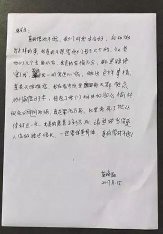
Mo was sentenced to death by the Hangzhou City Intermediate People’s court.
For almost a year, Shengbin Lin was immersed in tremendous grief.
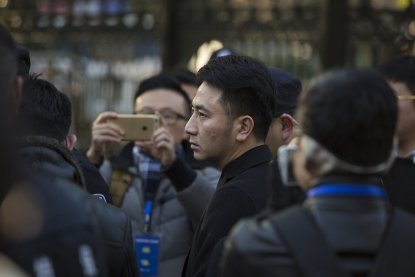
He often woke up from dreams of fire, first relieved that it was only a dream, and then he would open his eyes and find it wasn’t a dream at all, but the reality.
He started a blog named “Wife and Kids in Heaven” and the blog was followed by millions.
On Christmas, before the verdict was reached, he wrote:
Christmas this year feels very cold to me — it chills me to my soul. My heart is filled with sadness as I watch the decorations and the lights in Hangzhou, and the presents hanging on the big Christmas tree at the entrance of the housing compound, and the children with their festive smiles.
Lin attended the sentencing. He was still struggling with the deep emotional pain of losing his wife and children. After the verdict, Lin posted:
The devil has finally received the punishment of the law, the death penalty. I have suffered day and night for the past 200 days, and today finally received the verdict.[2]
What is the worst thing that can happen in life?
It’s not losing a loved one, or two loved ones.
It’s losing every one you’ve loved all at once, while you’re trapped in this world, at a young age, being eaten alive by the deep, tremendous emotional pain. And the murderer is someone whom you have always cared, respected and liked.
If I were Lin, I’d beg Mo to show me mercy by killing me as well. Any attempt to keep me in this world would be cruelty.
That’s why I would rather lose the ability to love or feel, than to bear such emotional pain.
Footnotes
.
How to Cook Bacon in the Oven
A big surprise
About a year and a half ago (April 2017), I was at work dealing with a difficult client.
She had retained our services to investigate her husband and to find evidence that he was cheating on her.
Fairly standard cheating spouse job, we got a few pieces of anecdotal evidence that he had time missing between when he was supposed to be at work and when he was home, late working stories, the whole beautiful cliches are cliche for a reason.
Something notable was that he was ALWAYS missing on the Thursday afternoon, roughly 3–6pm.
We set up a fairly routine tracking job and followed him back to a residence two suburbs away from his home area (10–12km / 6–7mi), he greets a woman at the door, perfect affectionate greeting shots, and then she leaves.
It took several days and another instance of tracking him back to the same residence to piece it together after that. It turned out our target was not cheating on his wife, he was sneaking away to babysit his grandson, child of his otherwise estranged daughter.
We came to the debrief with the client, and explained the situation to her.
When she heard our findings she was utterly furious, not that her husband was babysitting his grandson, but that he wasn’t cheating on her.
She demanded, then pleaded with me to modify my findings to make it look like he was cheating on her. We would later find out that she was his second wife and was seeking to divorce him while maximising her cut of the asset settlement.
When I refused point blank to falsify evidence and documents for her, she attacked me, tooth and claw. She went almost immediately after my face with her long nails. The last thing I remember from that day was sharp pain in my face and a wet pop before I blacked out from the pain.
The next day, I woke up in hospital to bandages and a doctor explaining to me that they were unable to save my eye. In the course of less than thirty seconds, a woman who could be described as ‘most of the way to Fussy Nonna’ had torn up my face and put her thumbnail through my left eyeball.
It may not be a limb in the classical sense, but it is still missed just the same. It is common these days for me to get pirate comments from passing people, typically very young children and older teens.
The teens get a stern glare.
The young kids get to say they met a pirate on the tram/bus today.

As there were quite few questions in the comments, I will cover them here.
I cannot name the woman in question as she is still going through the court system, however she was charged with several offences including assault causing grievous injury, attempted fraud and resisting arrest.
I very happily stood witness in her divorce proceedings on behalf of her husband, though I do not know the outcome of that other than she received very little after damages from the civil suit were resolved.
With this kind of injury as with many others, attitude makes all the difference.
For me, the turning point was sitting on a train reading a fanfic (I am such a ravenous reader that hard copy books are little more than speed bumps to me), when a couple of young (3–5 year old) children poked their heads over the top of the seat in front of me.
I looked up just in time for them to start emoting HARD about having found a pirate.
Their mother tried to shush them, but it didn’t matter. I barely even thought before I dropped straight into character and played the pirate for the pair of them for the half hour or so their journey coincided with mine.
I have since done so a dozen more times, and it leaves me with a grin that’s hard to wipe off for several hours afterwards every time.
The 3 years later update…
Well, a year and a half after my original post, and the third anniversary of my injury.
I still to this day get notifications and comments on this post, so I thought I would do a little update for any further people who read it.
Both criminal and civil courts have now since done their things.
In criminal court, she was given a suspended sentence, plus 120 hours of community service. For those who do not know the terminology, a suspended sentence is where an amount of time in jail is assigned, but only if the person in question performs further criminal acts. She was assessed on how much of a danger she was to the community as part of this.
In civil court, I sued her for loss of earnings, and medical bills. Punitive damages are not a thing here – civil matters are for justice, not punishment. When it came out that she was divorcing her husband without my testimony (instead, I stood as a character witness for her husband and against her during the proceedings), a lien was placed against the proceeds of her divorce, up to a maximum of 85% of it.
I won’t disclose the amount that I received, save that it was enough for me to gain multiple years of university education to improve my skillset and make me theoretically employable outside of a sector where I had been working for 3/4+ of my adult life.
I am indeed content with the sentence, though not for reasons most would assume. The reasoning is almost uncharacteristically cold blood for me.
This woman was a ‘Keeping up with the Joneses’ type. By extracting such a massive toll on her financially, it would have been a crushing blow to her ego. With her only being given a suspended sentence plus community service, she would be denied post-prisoner employment assistance while still having the negative of a criminal background. A heavy blow to her ability to recover financially.
I take comfort in knowing that her punishment is so much worse than jail. She will probably spend the rest of her life without the luxury she so greedily sought.
On the health end of things, I made the choice to leave the socket open so I could have the option to use a glass eye. I can state now with conviction I hate glass eyes, they are horribly uncomfortable for me to use.
Given that I am no longer as active as I once was, I found that both depression and weight gain set in fairly hard. I piled on more than 15kg in these few years. Talking to a psychiatrist helps, but can only help so far. The social contact I get in classes is also a boon, but 90% of the students are now half my age, and it is difficult to connect with them.
Finally, I updated that ratty old eyepatch with a series of them made by a wonderful woman from Niagra Falls, much better looking in my opinion. 🙂

The story of kitten Rain Day
A couple of months ago I heard the cries of a newborn kitten above my bathroom ceiling. Here in the Philippines, we call it a CR. I informed the landlord, but she said there was nothing she could do. The mews of the kitten stopped and I began hearing scratching, like something was trying to dig thru the ceiling. Eventually this stopped.

A day later I heard the crying kitten again, outside, on a beam in front of my apartment that connects the crawlspace under my roof with the outside world. There on top of the beam was a tiny kitten, perhaps it 7 weeks old.
I didn’t see its mother around and I had to leave and do errands. When I got back it was raining and the kitten was still high up on the beam crying. Then I saw another cat on the roof across which I recognized as the compound Tom cat. Not thinking I reached up and moved the kitten too the opposite roof. The male cat sniffed the kitten and then walked away, moving higher onto the roof and behind. The kitten followed. It began to rain, much harder, and I began to question if I made the right decision.
The next morning I was awoken by barking of the compound dogs, and what sounded like a kitten screaming. I jumped out of bed and opened my door, just in time to see the large black juvenile puppy pickup the kitten in it’s jaws. He looked up and saw me coming was distracted as the large white mother dog grabbed the kitten, which hissed, spit, and screamed..in two strides I was at the white dog and I was able to pry her jaws from the innocent kitten..
Now what? I brought the kitten inside my apartment. I fashioned a box with a towel, a measuring cup for drink, and a small food dish. I made a removable top for privacy as I assumed the kitten was traumatized after nearly being eaten alive.
Next I made a litter box.

That was two months ago. I named the kitten Rain Day and I’m happy to report that Rain is an extremely smart, well behaved, moody, and loving cat. He finally is going from the kitten mew to a meow, and loves to sit on my shoulder.
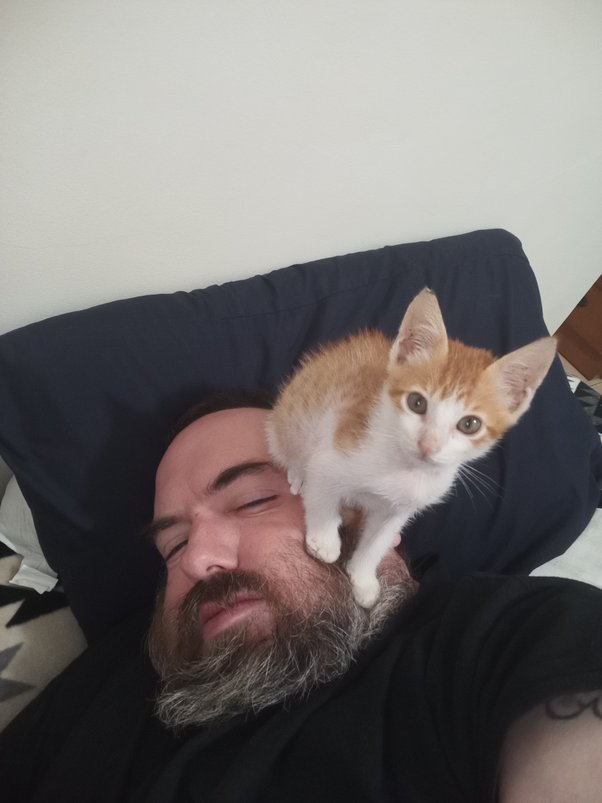
The Capybara (Hydrochoerus hydrochaeris)
Perhaps the friendliest animal on earth.








China’s Taiwan Strait drills: the new normal

The following is the first installment of a translated Guancha.cn article. The views are the author’s alone and do not represent the Guancha platform’s nor Asia Times’ opinion.
The People’s Liberation Army (PLA) completed a three-day military exercise in six locations surrounding Taiwan last week after Nancy Pelosi, the speaker of the United States House of Representatives, visited the island. The drills showcased China’s military reform.
The PLA’s missiles flew across Taiwan but the island’s military did not intercept them or alert the Taiwanese people. It’s possible that Taiwan’s Patriot missile system was unable to intercept them or Taipei did not want to escalate the situation. Taiwan authorities have yet to give an explanation.
Now that the PLA has crossed the midline of the Taiwan Strait and Taiwan’s 12-nautical-mile line, its military drills that simulate actual battles have become the new normal. China can now decide whether a future exercise will seamlessly be turned into actual combat.
The epic 2022 military drills in the Taiwan Strait are China’s tough response to the provocation of Nancy Pelosi, the speaker of the United States House of Representatives. They are also an effective demonstration of China’s determination to achieve reunification.
Much as “a sweet musical echo remains whirling around the house for three days,” the effects of the drills will linger in cross-strait relations, Sino-US relations and the military balance of power. The drills helped ease mainland people’s depression and anger.
China is consistent in its words and has no need to follow others’ plans when it takes actions. The exercise came later than that of the United States but it has achieved its goal.
Pelosi had said she would visit Taiwan in April but postponed the trip at the last minute when she tested positive for the coronavirus.
In late July, the Financial Times reported that Pelosi planned to “drop by” Taiwan during a visit to Asia-Pacific countries in August, prompting repeated stern warnings from China. In the evening of August 2, Pelosi defied the warnings and visited Taiwan. She left on August 3.
The PLA’s joint exercise began on August 4 with some military operations on August 3. The exercise was unusually rapid.
Participating forces, actual deployments and operational details are now classified. It is not known whether they will be announced in the future, but this is undoubtedly a large-scale operation at the theater level and also the largest since the PLA’s military reform.
The operation of the Joint Staff Department of the Central Military Commission and the Eastern Theater Command in the exercise has proved the depth, breadth and effectiveness of China’s military reform.
It is unlikely that the PLA started working on the exercise plan only when they knew for sure that Pelosi was on her way. The PLA may already have had a full plan in place well before Pelosi’s canceled Taiwan trip in April.
It is certain that the Joint Staff Department and Eastern Theater Command had their own plans for the Taiwan Strait. And it is possible that they were just taking one of them out and modifying it for implementation.
On the other hand, the drills could not be completed with only a plan as they required real, not virtual, weaponry and ammunition supply. The fact that the exercise could be pulled off quickly shows that the PLA’s readiness for war has reached a very high level.
Such readiness fulfills the requirements of all kinds of military plans and can be put into action within a short time. This is the so-called “cold start.”
It goes without saying that the political goal of this exercise was to create maximum deterrence of the US, Taiwan and other hostile forces. Therefore, the exercise had to be high-profile and powerful and have a clear and reliably deliverable military goal.
Six directions

The exercise had six directions.
The direction toward Taipei targeted the heart of Taiwan. The one toward Yilan city was aimed at blocking the US and Japanese forces coming from the Ryukyu Islands. The one towards Taiwan’s east coast – which has the Chiashan Air Force Base, Suao Military Base and Zhi-Hang Air Base – was aimed at blocking US forces coming from the western Pacific Ocean.
The drill in Bashi Channel was assisting the one near Kaohsiung and was a key zone to intercept the US Air Force coming from Guam.
The direction towards Kaohsiung did not only threaten Kaohsiung, but also squeezed Penghu from the side and backed up the drill in Bashi Channel. No wonder it had the largest exercise area. For quite some time, it has been a key area for the PLA warplanes to enter Taiwan’s Air Defense Identification Zone (ADIZ).
Finally, the drill across the strait formed the largest and most direct pressure on the hinterland of Taiwan Island from Hsinchu to Taichung.
The six directions allowed the PLA to choose to land on Taiwan directly or just block Taiwan by sea and air. In wartime, either choice can achieve the goal of reunification by force.
On this basis, various options can evolve. For example, the PLA can weaken the Strait direction and strengthen the Yilan, Pacific and Bashi Channel directions and use the Taipei direction to support the Yilan one.
Or it can strengthen the Penghu direction to achieve the air and sea blockade and occupy Penghu to force Taiwan to surrender.
Or the PLA can enhance the Strait and Kaohsiung directions to make a quick landing on Taiwan while supporting the Yilan, Pacific and Bashi Channel directions with reinforced air power that can quickly get to the island to counter the late intervention of the US air and sea forces.
Peaceful reunification is always preferred but reunification by force should remain an option.
Reunification by force is ideally a quick war but can be a protracted one. All options are valid only when they are realistic options, instead of last resort.
The ability to “cold start” is the key to quick fixes and it is also essential for protracted warfare, though with less direct impact. A protracted war is not the same as a drawn-out war. It still aims for the maximum results in the beginning to create the most favorable conditions for subsequent battles.
The swiftness, practicality and integrity of the exercise have already created a great deterrence for the US, Taiwan and other hostile forces.
No problem if Taiwanese undeterred
Of course, some people may say that Taiwan’s public sentiment does not seem to be deterred. It seems that their “horse races and parties continue normally.”
The PLA’s drills are never meant to deter the Taiwanese people, but the forces of “Taiwan independence” and their supporting powers outside the island.
In fact, if everyone is numb, that’s good. Turning such an exercise into an actual battle is as easy as piercing a piece of paper.
From now on, PLA’s drills near Taiwan have become a new normal. Whenever similar provocations against China happen, the PLA will do these again. It is up to China to decide which exercise will seamlessly be turned into actual combat.
It is not up to the players to decide whether the ball is wiped out or out of bounds, but up to the referee. China is the referee on the issue of whether “Taiwan independence” and foreign forces have crossed its red line. When the Taiwanese army loses its preparedness one day, reunification will be achieved.
It is easier said than done if Taiwan wants to look calm and relaxed while staying alert internally.
Taiwan needs to have a strong political leadership, a well-trained military and a united population in order to swiftly transform itself from a state of lack of preparedness to a wartime state. Taiwan needs to have sufficient psychological, material and strategic preparations for the battles. But it simply cannot achieve that.
Chen Feng is editor of Guancha.cn, which originally published this article in Chinese as an exclusive manuscript. It is republished in English translation here with kind permission.
Bigmouth

Meet Bigmouth; a very chatty, very cuddly, very social kitty cat that just up and one day decided to follow my mom into her house.
Until then he had lived as a kind of neighborhood pet and never went inside people’s homes; he would visit people frequently as they were outside to accompany them as they did things and enjoyed the life of a bachelor who perched upon many laps and several of the neighbors and my mom would leave food and water out for him.
If you were mowing, barbequeing, sunbathing, or just getting groceries there was a fair chance the neighborhood cat would come be your buddy.

Nobody is sure where he came from, he must have been left behind or dropped off.
He was neutered, used to dogs, and not confrontational with other cats and seemed to enjoy being a tramp.
One day in late October however, perhaps because of the cold, he followed my mother inside and slept the whole night on the couch.
The next morning after some snuggles he left to go back outdoors, but came back again that afternoon, trotting up behind her after a grocery trip and hanging out until morning.
Soon enough he had food and water bowls, a litter box, and the run of the house.
He stopped leaving the yard to visit the neighbors anymore because he found a place he decided was home and adopted my mom as his person.

Let me explain to you all how China conducts war…
Giant Hornets are the largest wasp in the world.
They are commonly referred to as the “Yak Killer” because of their powerful sting.
They are the bane of a bee’s existence.

The beehive’s bad day all starts when one assigned scout hornet finds the beehive. And marks it with a scent. Spraying the beehive with a chemical that will help provide directions to his hornets. He then returns with his special scent to his Hornets to let them know the directions.
Then – later – a few dozen other hornets show up at the Bee Hive and all hell breaks loose. With thousands upon thousands of Bees, you think they’d stand a fighting chance, but not so much.
It gets ugly fast. The hornets are almost entirely immune to bee stings (although enough stings will indeed weaken a Giant Hornet).
When you watch it happening, you are rooting for the bee “Just sting him! Bite his wing!”
But these hornets seem to shake all the bees off them. And their mandibles cut these bees down fast, cutting their heads off like scissors through paper. They are entirely overpowered.

Giant Hornets can kill 30–40 bees a minute. There are bee heads, legs, wings, bodies falling everywhere.
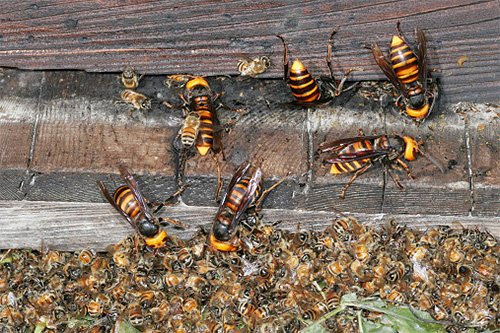
They clean out the nest and then proceed to eat the larvae and honey within the nest.
But.
There’s a breed that came up with a way to counter this.
Chinese Honeybees (Apis cerana) will notice when the scout hornet shows up at their nest. They’ll purposely let it come in close without reacting. Then – it gets near them and begins to mark the hive with its scent that it will then bring back to the hornet’s nest.
As soon as the hornet gets in close. They all jump on it:
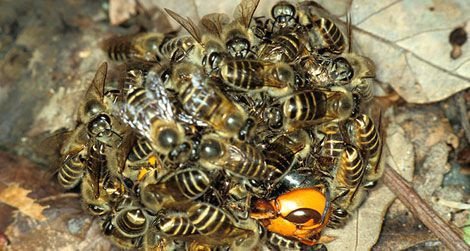
Then swarm and wrap all the way around it.
Eventually, you can’t even see the hornet. At the center of the mass, the huge hornet squirms, trying to break free. But more layers of bees begin to be added.
While they are around him, the bees begin vibrating. As they vibrate, it begins to heat the mass up at the middle.
The hornet is in the middle of this mass. The hornet’s maximum temperature limit is 115 ° F. The honey bees can tolerate up to 118°.
They then heat that center area up to 116°, and keep it there (sometimes for hours), slowly killing the hornet.
This prevents him from ever returning to his nest with directions, thereby saving the Hive.
It’s an incredibly precise endeavor of teamwork, keeping the temperature just below their upper limit, and just above the hornet’s. The Chinese Honeybees have successfully found the sweet spot.
.
.








